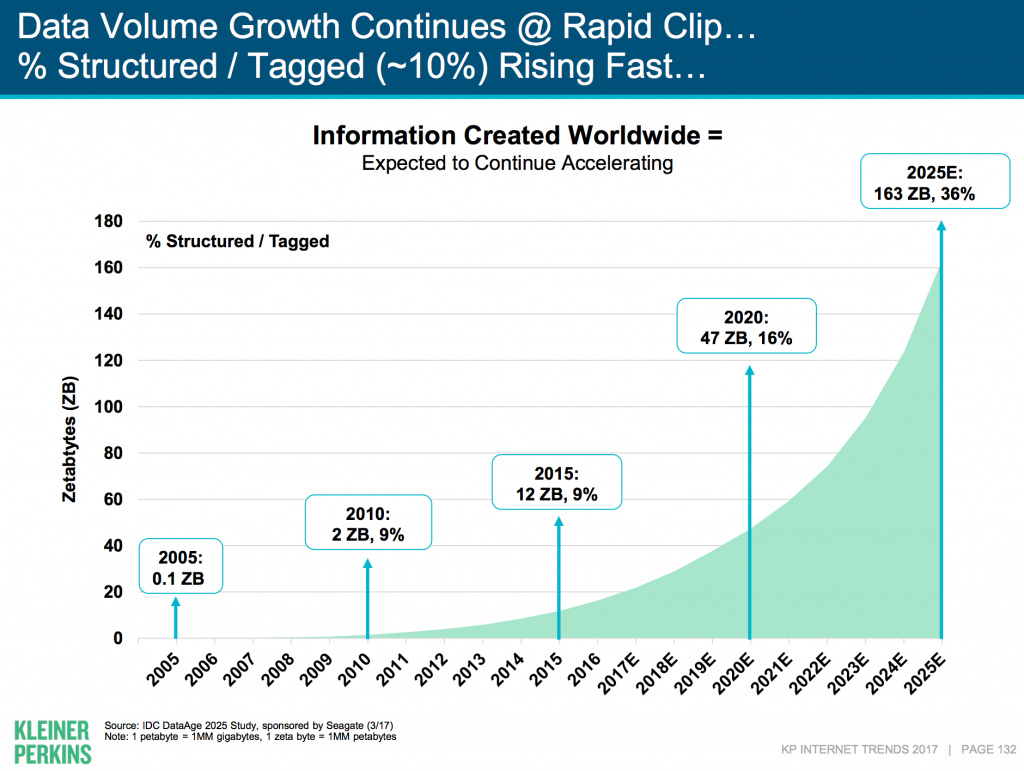Were you surprised to read the title of this post? Do you believe that using technology to understand customers is the only way today? Then let me explain why I believe it’s not quite that simple.
In today’s data-rich environment I’m not really suggesting that you actually ignore data nor technology! However, in working with clients around the world as well as in numerous industries, I have found that many are lost by the wealth of information that is available to them.
In fact it seems to drown out their reasoning of what to do with all the data and they remain frozen in indecision. Or worse, they invest in the latest platforms and systems in the hope that using technology to understand customers will help them with their knowledge void. Is this your case? If so, then just follow the steps I detail below and you will soon be doubling, quadrupling, if not getting 10x the ROI from your data.
The Current Situation with Data
Data is everywhere and most organisations are drowning in it! Technology is being blamed for disrupting businesses, but in most cases these companies have simply not adapted to this new data-rich world.
I admit, a lot has changed. Consumers are adapting their behaviours to the trading of their personal information. Companies are changing business models as their value shifts from products to services, or even to the sale of the information they gather.
Some organisations are reinventing themselves to take advantage of these changes. Others are ignoring them – at their peril – since they are at risk of becoming the next Kodak, Borders or Blockbusters. And of course the latest covid-19 epidemic will hasten many others to unfortunately follow suit in the coming months.
If you’re interested in reading an analysis of the US Retail Apocalypse and the 23 big retailers closing stores then I highly recommend this post on Fox Business from last year. No doubt it will need updating in 2021 when the fallout from the current pandemic becomes clearer.
So what should you do? Well, I believe that you should start by renovating your business model to take advantage of the countless new opportunities all the data and new technologies open up for you. And in my opinion, you had better do it sooner rather than later, because your competition will almost certainly be investigating ways to make use of it all!
The Opportunity
Yes you have data and information, but if you’re a regular reader of my blog, you will know that you have to turn these into knowledge to understand your customers. And then develop insights and actions. But this can only be done by asking the right questions of your data and information. The latest technology is not going to make up for your lack of thinking!
If you are struggling to take needed action despite a wealth of information, then this is certainly where you should start making changes – fast!
A 2015 Capgemini and EMC study called “Big & Fast Data: The rise of Insight-Driven Business” showed that:
- 56% of the 1,000 senior decision makers surveyed claim that their investment in big data over the next three years will exceed past investment in information management.
- 65% admit they risk becoming irrelevant and uncompetitive if they do not leverage data. This is especially true given that non-traditional providers, like startups thriving on big data processing, are moving into their industries.
- Although companies realize they desperately need to dig into data analytics to maintain their business position, 45% surveyed think their current internal IT development cycles are not sufficient for new analytics and don’t fulfill their business requirements.
- Making matters worse, over half (52%) of those surveyed see the speed of their organization’s insight generation from data analytics as constrained by its existing IT infrastructure.
So what has happened in the past couple of years? Not a lot in terms of usage, but a lot in terms of data gathering; just check out the graph below from Kleiner Perkins for current and estimated growth of data volume. It is expected to more than triple over the coming five years.

Of course big data has been big news for years, thanks to its 5Vs (volume, velocity, variety, variability, value). These were the driving forces behind the need and finally the upgrades in computing power that made it possible to adopt a new and significantly faster way of analysing it all.
This article by Olivia Ryan sums up the “6 ways big data expansion can significantly damage our privacy.” These are the same major points that the GDPR hoped to address.
The EU’s GDPR (General Data Protection Regulation), with its stricter rules that came into force last year, focuses on many of the data privacy issues that have people the most concerned. It is definitely worth checking out the details here if you have still not made the necessary changes within your own organisation.
Interestingly, there is no equivalent federal law in the US (for now), but that doesn’t mean you can ignore it if your business is based there. Find out more in this other excellent article on Forbes.
It’s true that companies do recognise all the threats detailed in the earlier mentioned study, and while startups flourish in every industry, the mastodons of commerce are generally much slower to change, hence the need for GDPR. (see below for an alternative approach to individualised data utilisation)
An Alternative Approach
Data comes into its own when used for personalised engagements. However, there is an alternative or complementary approach that some organisations are now using. This is to address global issues such as resource management, water usage or pollution, which certain customers feel passionately about.
One example is Nestle whose relatively new CEO Mark Schneider is finally bringing some fresh air to the dark and dusty halls of their Vevey offices. However, cutting costs, selling less attractive business units (such as their US candy business to Ferrero completed in 2018) in the hope of upgrading their image, will not bring sufficient changes that consumers demand of large corporations today.
Compare this to the efforts made by Unilever’s previous CEO Paul Polman. He turned the organisation into one that is admired by consumers and shareholders alike. As they say in their website
“We aim to use our scale and influence to help bring about transformational change in four key areas where we believe we can make the biggest difference:
- Taking action on climate change and halting deforestation
- Improving livelihoods and creating more opportunities for women
- Improving health and well-being
- Championing sustainable agriculture and food security.”
- Information-Savvy Customers Now Control the Marketplace. 70% of consumers agree technology has made it easier than ever to take their business elsewhere.
- The Culture of Immediacy Drives Mobile-First Expectations. 64% of consumers expect companies to respond and interact with them in real time.
- Customers Still Value Human Connections in a Tech-Driven World. Two-thirds of consumers say they’re likely to switch brands if they’re treated like a number instead of an individual.
- New Data-Sharing Attitudes Spark Next Era of Marketing Personalization. 63% of millennial consumers agree they’re
willing to share data with companies that send personalized offers and discounts. - Smarter Use of Customer Information Expands Opportunities for Sales. More than three-quarters of consumers say it’s absolutely critical or very important to work with a salesperson who is focused on achieving customer needs instead of making a quick sale.
- Fast, Personal Service Is Directly Linked to Customer Loyalty. 71% of consumers say that customer service provided on any day at any time has an influence on loyalty, and almost as many (69%) say the same about personalized customer care.
Looking at these findings, it gives me hope for a more human approach to customer connections by manufacturers and retailers alike. I believe that those that fail to take this now highly informed customer into account, are unlikely to survive the next decade.
From a Linear to a Circular Economy
One interesting approach to sustainability that first appeared in the seventies, but which has been gaining increased momentum in 2020, is a new mindset for business, that of the circular economy. The Ellen MacArthur Foundation defines a circular economy as:
“A framework for an economy that is restorative and regenerative by design”
They go on to explain that the approach is underpinned by a transition to renewable energy sources. The circular model builds economic, natural, and social capital, and is based on three principles:
- Design out waste and pollution
- Keep products and materials in use
- Regenerate natural systems
Those who are supporting this approach are hoping for a positive response from customers to favour their products, since they produce no waste. It will be interesting to follow the trend in the wake of the covid-19 pandemic and the increasing unemployment that has hit almost every country in the world. Will consumers be ready to pay more for a better future for our planet, or will their recent suffering make them more egotistical in trying to return to as normal a life as possible post virus? Only time will tell.
I for one hope that the pandemic has given us all time to reconsider our values and that we will make better choices going forward. From buying local, to recycling and sharing more, to shopping our own wardrobes rather than buying new, the planet will benefit from a more responsible approach to using resources.
Making Data Analysis the Beginning and Not the End
I already mentioned it above and also dedicated a previous post to the topic of technology being an enabler not a disruptor of businesses. (Check out “Technology is the Enabler not the Disruptor (So Stop Using it as an Excuse)” for more on this)
Many organisations think that their problems with data will end when they get the latest technology platform installed or start using the newest system for analysing it. Nothing could be further from the truth. Perhaps technology does enable improved analysis, but as previously cited, data is only as good as the questions you ask of it. That’s why using data and technology to understand customers on their own are not likely to lead to success.
In addition, in “The Impact Of Changing Consumer Expectations On Manufacturers” Steve Smith spells out the situation very clearly for producers:
“With new consumer expectations being set by companies that disrupted their respective markets — Uber, Amazon, Netflix — the previously accepted levels of customer service are no longer good enough.”
What these three companies demonstrate perfectly is that technology has merely enabled the consumer to get more of what they want, whether that is travel, retail or entertainment. Therefore it is vital to understand your customers and what their needs are behind their stated desires.
Although these are three very different industries, they have attracted a growing number of customers because what they offer is a trustworthy service. No, rather they offer fewer surprises, and whenever there may be disillusionment, they sort out the problem quickly, and usually far above and beyond the customers’ expectations. Surprise and delight are the table stakes of today’s world of customer service.
In Conclusion
Coming back to the title of this post, as you can see there is a lot to consider before using technology to analyse all the data you have. And probably it’s a lot more than you even know about at present, at least from my experience!
You can’t go wrong if you start with the customer and identify what you need to know and understand about them, in order to go beyond their expectations.
Make a list of all the things you want to know and then see if you have the information to answer them. In many cases you do, it just hasn’t been analysed in a way that makes the solution obvious. That’s when you should review and eventually update your platform and systems, not before.
Doing this any earlier will be like buying a fancy new hammer to crack a nut! What you need to understand is the best way to crack the nut; often times your current hammer is fine for cracking if you use it correctly.
If you’re drowning in data and thirsting for actionable insights, then we should talk. Click the button below and I’ll give you some ideas on how to crack your own nut!
This post was first published in March 2018 and has been updated regularly to reflect the latest ideas, research and opinions.












